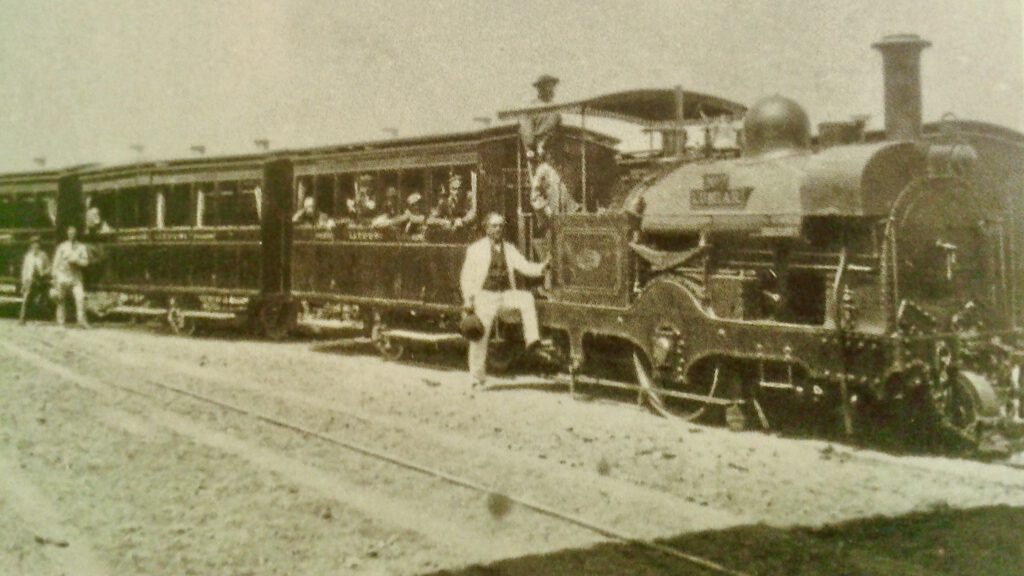
The Larmanjat was a monorail system invented by the french engineer Jean Larmanjat (1826-1895). The system was made of a central vignola type iron rail and at both sides longitudinal wooden sleepers about 60 cm from the central rail. This system was adopted by “The Lisbon Steam Tramways Company ltd“. Locally the system was called “Companhia de Tramway a Vapor“, but commonly known as the Larmanjat. The lines used the existing roads from Lisboa to Sintra and Torres Vedras.
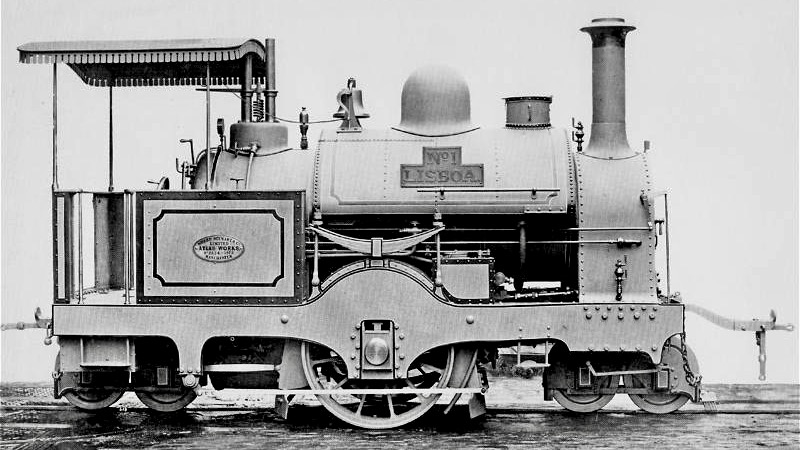
It was operated with 16 steam locomotives built by Sharp, Stewart and company with coaches and wagons from Brown and Marshalls in Birmingham. The steam locomotives had a pair of driving wheels running on the longitudinal wooden sleepers, while the locomotives were guided with double flanged wheels assembled in bogies and running on the central rails. The coaches and wagons had two double flanged wheels that were supposed to carry most of the weight and two, smaller normal wheels at the sides running on the longitudinal sleepers to prevent tumbling over. The passengers sat back to back on longitudinal benches to concentrate the weight to the centre. Boarding was through doors at the sides.
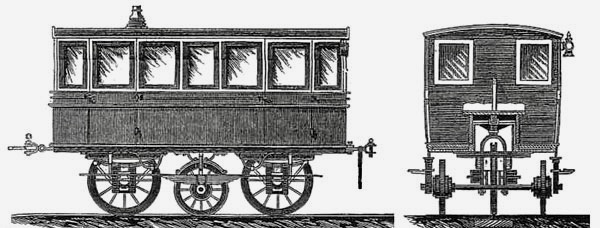
The Lisboa terminus was at Portas do Rego (São Sebastião da Pedreira). Plans to extend the lines to Intendente, closer to the city centre, were never realised. The line to Sintra was officially inaugurated on 2 July 1873 and started commercial services on 5 July. The line was about 27 km long and the trips were scheduled to take about 2h10′. On 6 September 1873 the about 54 km long line to Torres Vedras was opened. For this line the trips were scheduled to take about 4h20′. The Sintra line was foreseen to transport mainly passengers with about two or three passenger trams daily and one freight or mixed passengers/freight tram. For the Torres Vedras line the transport of freight was the most important with normally two freight and two mixed trams daily.
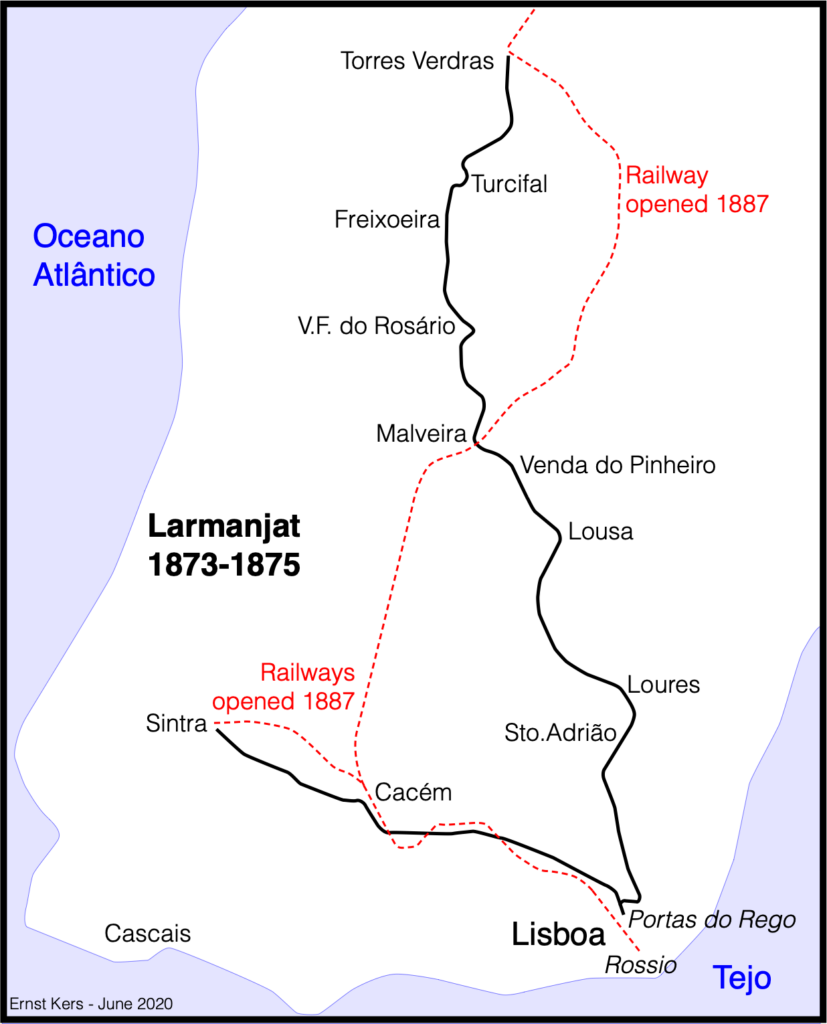
The high expectations were not fulfilled. The trams often had problems to ascend the gradients, especially with bad weather. The trams also derailed often, making reliable service almost impossible. As a result the trams often ran late, sometimes Lisboa – Sintra took seven hours and Lisboa – Torres Vedras over ten hours. With this poor performance the contemporary common type animal drawn road vehicles could easily beat the Larmanjat competition. All efforts to improve matters didn’t work out and on 8 April 1875 the Larmanjat services were suspended. Twelve years later broad gauge railways were opened from Lisboa to both Sintra and Torres Vedras.

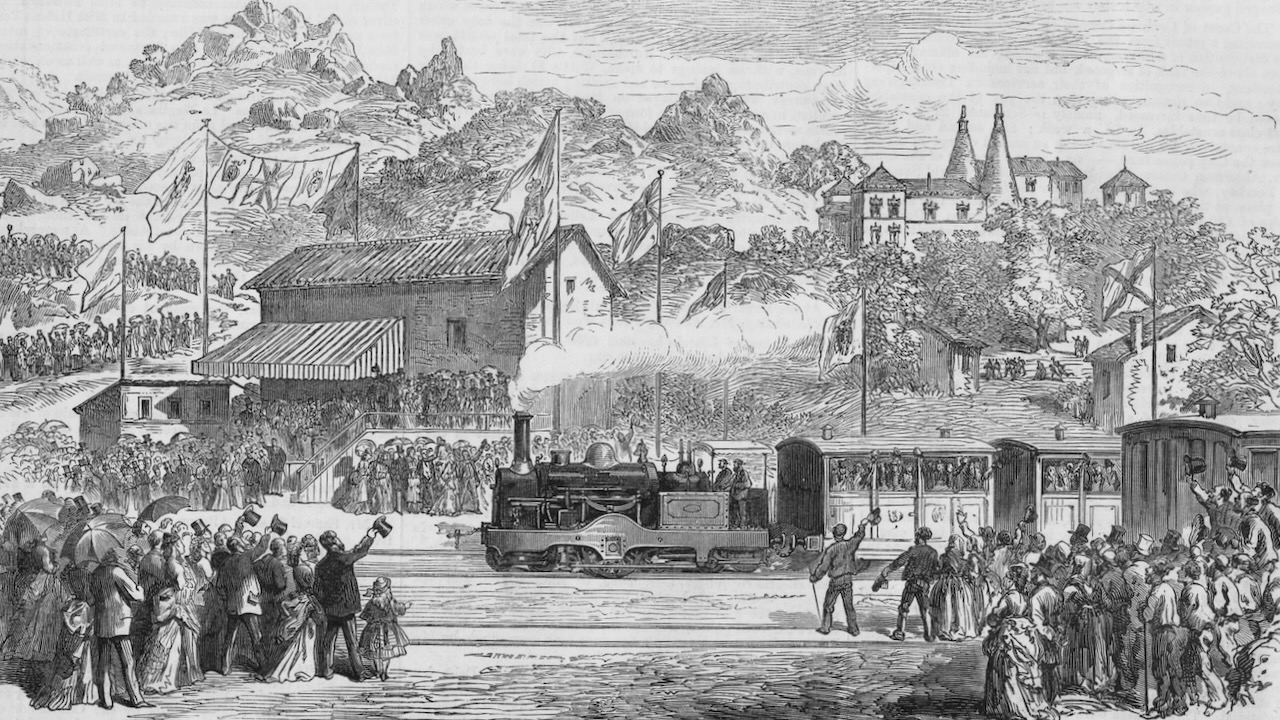
Leave a Reply